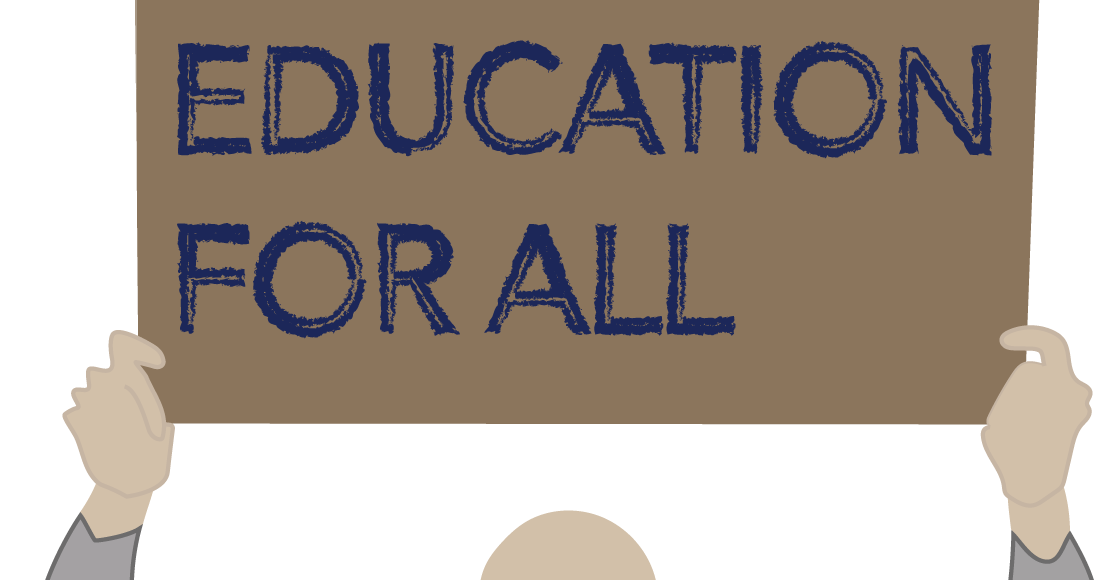College institutions honorably advocate for a diverse student body, yet underlying systemic inequalities undermine this claim in the contemporary admissions process.
In a 2014 article, The Baltimore Sun’s editorial board found most college admissions websites assert: “We seek to admit the most interesting, able and diverse class possible.”
Schools are tasked with balancing an incoming class of students with exceptional grades, high-ranking test scores, unusual life experiences — such as socioeconomic struggles and lack of parental guidance and educational support — as well as out-of-state applicants.
Economic advantages transform a college application, revealing socioeconomic disparities in educational opportunities. Comparably, wealthier students have easier access to Advanced Placement (AP) which offer college-level courses in English, math, history, languages and more or Dual Enrollment courses. These courses provide a chance for students to be enrolled in two different academic institutions at the same time, such as a high school and community college. This serves as an attempt to earn a high school diploma and work toward a college degree at the same time. Alternatively, in underfunded administrative divisions, these courses are inaccessible. In other cases — such as in freshman Ryan Mangiere’s — some schools don’t offer these courses to begin with.
“It was a setback to see friends from different high schools coming in with more credits than me, such as Dual Enrollment community college courses, since my high school didn’t offer them,” Mangiere said. “A university was likely to choose an application with AP or Dual Enrollment credits over mine.”
Financially flourishing schools can more easily support sports teams, clubs and art programs. Involvement in these activities sets a student apart from other applicants. The combination of college-level courses and extracurriculars assists students in assembling a versatile resume that universities value. Residents in underserved communities have fewer opportunities to engage in school organizations or advanced courses, keeping their applications from standing out.
On top of that, the extent of parental guidance during the college application process affects one’s chances of admission. According to a 2022 Education Advisory Board survey of 4,848 high school seniors, nearly half classified “parental influence” as one of their top-five sources during their admissions process. The article finds that lower-income students are less likely to depend on parental support than higher-income students when applying to college.
Freshman and first-generation student Karen Reyes said she agrees with this study. Reyes also said she struggled with researching colleges, planning her class schedule and purchasing college necessities without parental support.
“I had no one with college experience to tell me that scheduling all five classes in one day was crazy,” Reyes said.
JMU’s undergraduate program is only 12% first-generation students, while VCU’s freshman class includes 37% first-generation students and 21% at the University of Lynchburg. Not only are first-generation students overlooked, but they’re often inexperienced with criteria included in a college application. For example, if a student failed a virtual course during COVID-19 due to extraneous reasons, they may be unaware of the opportunity to explain this on college applications without the help of someone who went through the process.
Freshman Joseph Clarke had the help of his parents, who are both college educated. Clarke said his college applications were easier thanks to this support, as his parents helped edit his essay and encouraged his engagement with clubs in high school.
“My parents were essentially the reason I had an application worth reviewing,” Clarke said.
Even though high school students’ parents may encourage them to enroll in challenging courses and, as a consequence, they may fail to make full use of the educational opportunity, they still acquire an academic advantage over students without that motivation. This puts them on a level playing field with students who willingly decide to take advanced classes out of self-motivation. Thus, their achievements may go unrecognized during the admissions process.
It’s routinely easier to get into a university as an in-state student rather than out-of-state. JMU Admissions posted a summary of the 2023-2024 admissions, revealing that 3,466 in-state students enrolled and 1,474 out-of-state students enrolled. There’s also a theory that some colleges exhibit bias toward in-state students due to preference and relatability — though it’s hard to tell whether JMU falls into this category. U.S. News reported that schools and states are establishing enrollment caps, otherwise known as a restriction, on the number of out-of-state students admitted each year. Therefore, these students must achieve higher test scores and grades in comparison to in-state students to be considered for admission at many institutions.
Out-of-state students also pay higher tuition than in-state students. While this additional money is useful to universities, it forms a financial barrier for out-of-state students. These students have fewer chances for financial aid and scholarships, since most of these opportunities are tailored specifically for in-state residents. The disparity in price may dissuade qualified students from applying. This leads to a less diverse applicant pool and perpetuates the imbalance of a diverse study body that universities claim to seek.
Raising awareness about these inequalities cannot be accomplished individually. Efforts are required from those with economic privilege, parental support and in-state advantages.
To decrease the inequity, increased funding for underprivileged high schools is crucial. Grade schools and colleges can also play a salient part by integrating college preparatory courses and educational counseling programs. Offering free workshops on essay writing and English classes focused on college applications during high school can also impact a student’s application.
By fostering community engagement, students, parents and educators can advocate for institutions to achieve and appreciate diverse experiences as well as overcome obstacles to create a more equitable and inclusive admissions process.
